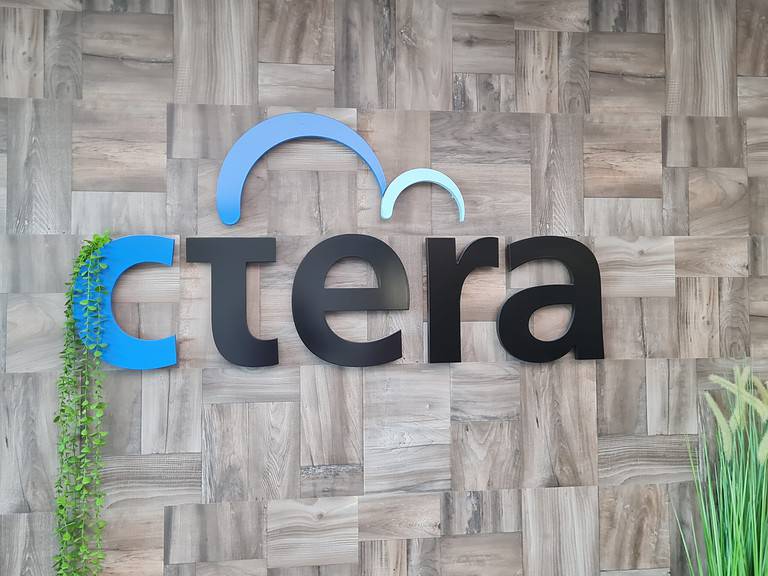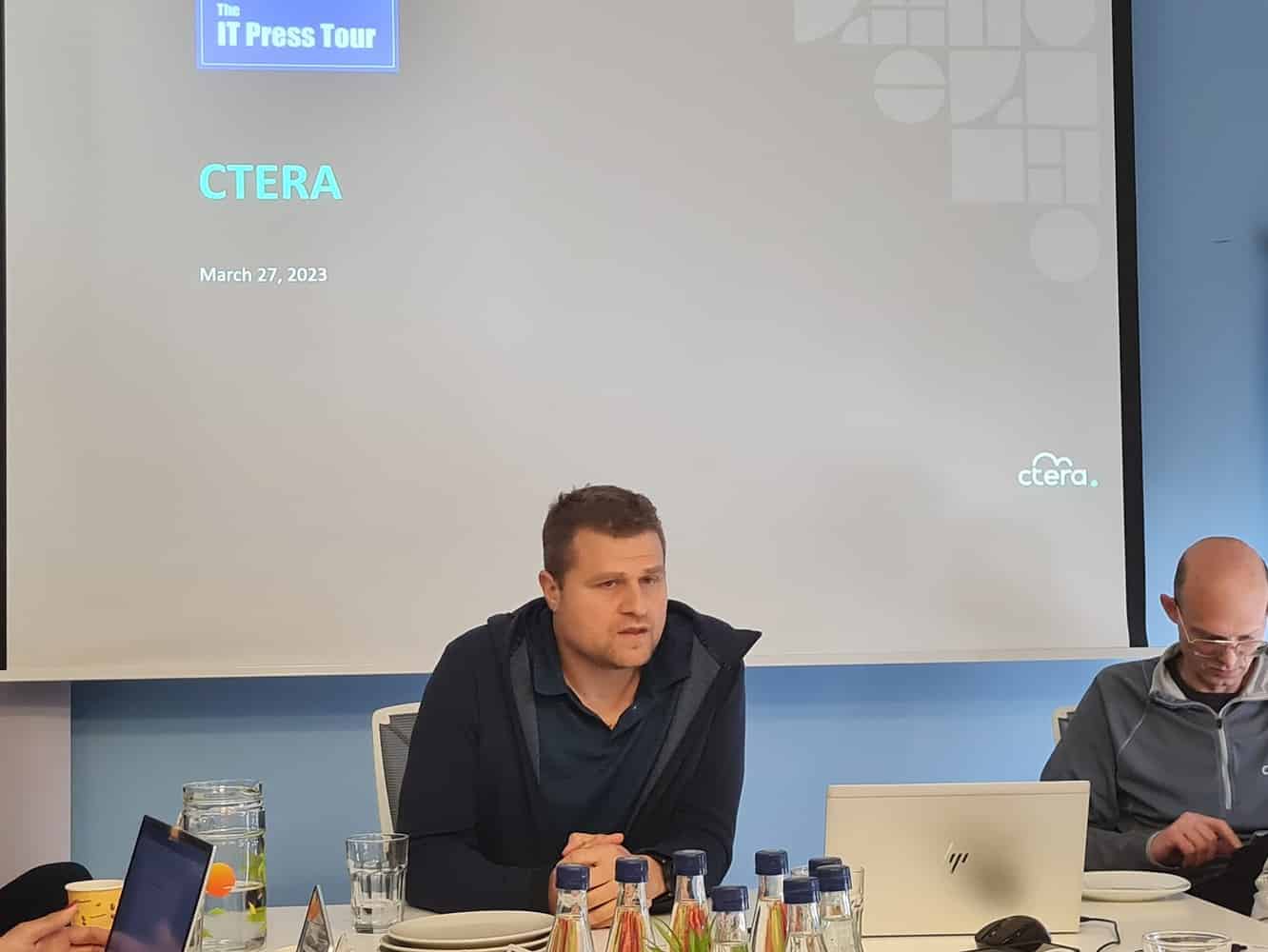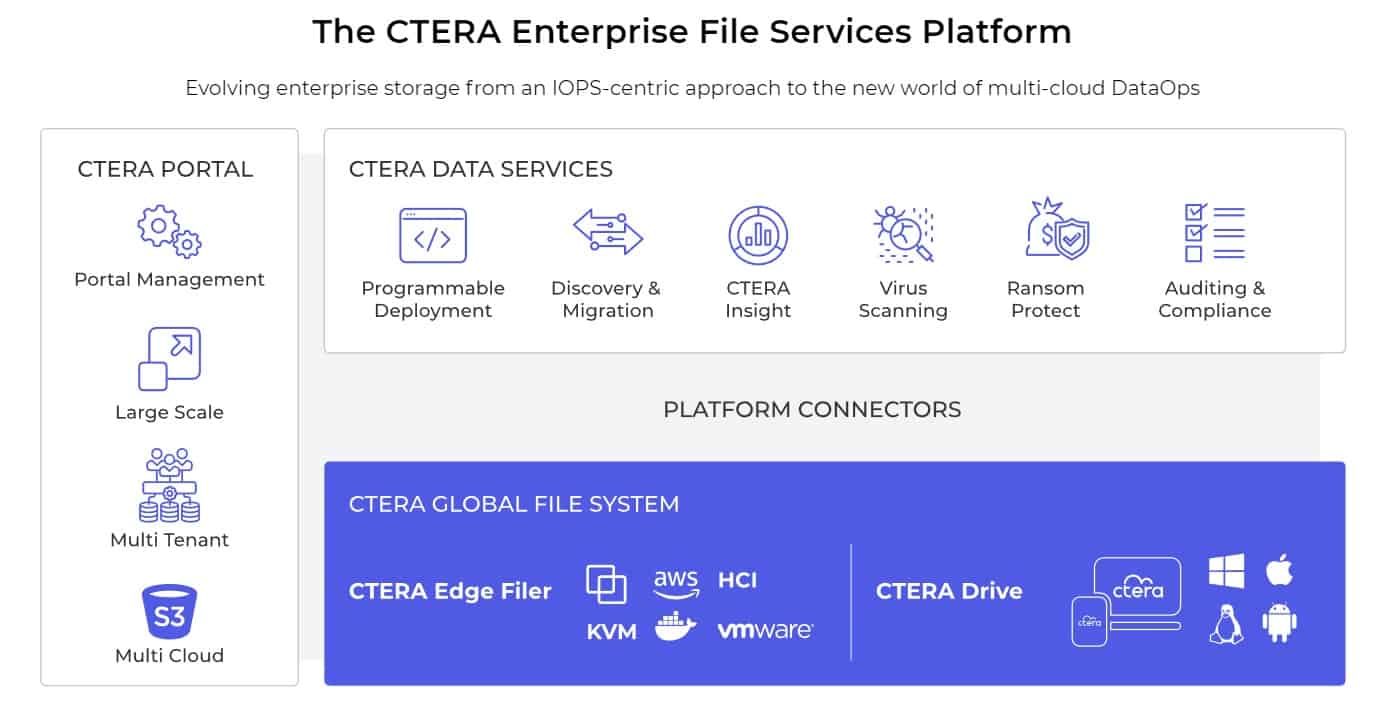CTERA has put years of development into its global file system. Now it has a platform ready for the increasingly important DataOps.
During the recent IT Press Tour, we visited CTERA’s Israeli office. We could hardly have wished for a better time to learn more about the company. After all, according to the company, the entire industry is in a metamorphosis. And about CTERA, to a certain extent, you could also say that it is going through a shake-up, because during our visit, the company let us know that there are quite a few shifts in management.
From IOPS to DataOps
First, let’s discuss the changes in vision and technology. CTERA was founded in 2008 by Liran Eshel and Zohar Kaufman. Originally coming from the security market, they jumped into new technology primarily because they saw a lot in cloud computing at the time. Back then, the cloud was much less relevant than it is today. While they believed in the benefits, they also saw challenges around managing infrastructure, data governance, privacy and security.
Today, however, data from large enterprise companies is constantly moving in all directions. Data moves from cloud to cloud, from edge location to edge location, from endpoint to endpoint and we could go on and on. With that idea in mind, CTERA built the global file system. That platform supports centrally managing file storage, as well as providing control and governance over data and storage.
Oded Nagel, CTERA’s current CEO, explains during our visit that that approach initially led to very different issues than today. “When the company was founded years ago, we talked about storage systems. Most of the time companies would come to us and ask how many IOPS (input/output operations per second, or performance measurement of storage systems, ed.) we could do. And do you also do backups, compression and deduplication? That was legacy, that every storage solution was looking to have.”
According to Nagel, a lot has changed. New issues about tiering, caching, compliance, governance, data mobility and the ability to access data from anywhere came into play. More recently, companies using CTERA are also paying attention to cloud-native collaboration and cyber resilience. “And of course, the most important thing we’re seeing is all the DataOps. We see huge demand for DataOps use cases, where CTERA is the global file system with the data,” Nagel said.
By this, Nagel is referring to actually knowing what is in the global file systems. With legacy NAS servers and file systems, in his view, that’s where things go wrong. Legacy systems get in the way of DataOps, where companies analyze data and improve business efficiency. “If you give them tools first of all, to analyze and then to decide what they want to do with this data, they get the power to smart decisions. That’s exactly what CTERA is all about.”
Projections
When that technological support is combined with the expected data growth, there is a bright future ahead as far as CTERA is concerned. Meanwhile, CTERA customers collectively log 150 petabytes of data and hundreds of billions of files. Referring to Gartner predictions, Nagel sees that continuing for some time to come: large enterprise organizations are expected to triple the capacity for unstructured data in on-premises, edge and public cloud locations by 2026. In doing so, 60 percent of enterprises would implement a hybrid cloud file solution, up from 20 percent today.
Nagel also shares examples of use cases that accelerate adoption. For example, he sees it a lot in data processing at the edge. In those situations, companies often want to know more about protecting, replicating and collaborating on machine-generated data. Such issues come into play in healthcare, for example. Machines generate medical images in that sector. At that point, very fast movement and processing is needed, such as for fast analyzing the image in the cloud.
The image below shows a bit more about how CTERA provides technology support with the global file system
Also shifts at the top
In addition to these changing technology needs, there is something extra going on at CTERA. In fact, Nagel has only just become CEO; the official announcement took place on March 29. Although he has no experience as CEO, he is one of CTERA’s first employees. Moreover, he served as chief strategy officer for the last five years, in which he was responsible for product strategy and global partnerships. Thus, Nagel knows CTERA very well.
Nagel’s promotion also means that Eshel is stepping down as CEO. He does remain involved as Executive Chairman of the Board. The aforementioned founder Kaufman is officially no longer involved with the company. In that regard, there is plenty of new noise coming internally as well. We are therefore curious to see how CTERA will actually fare in a future full of DataOps.
Also read: HYCU leads by example for SaaS backups; who will follow?


